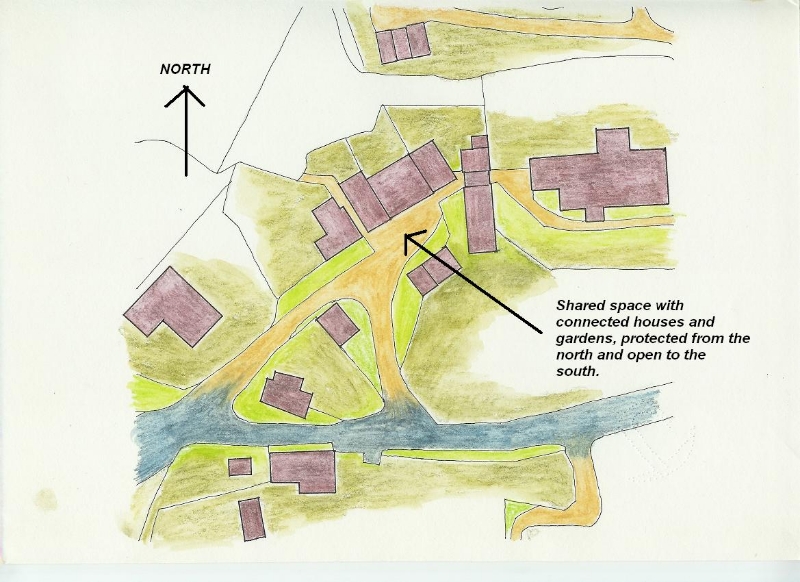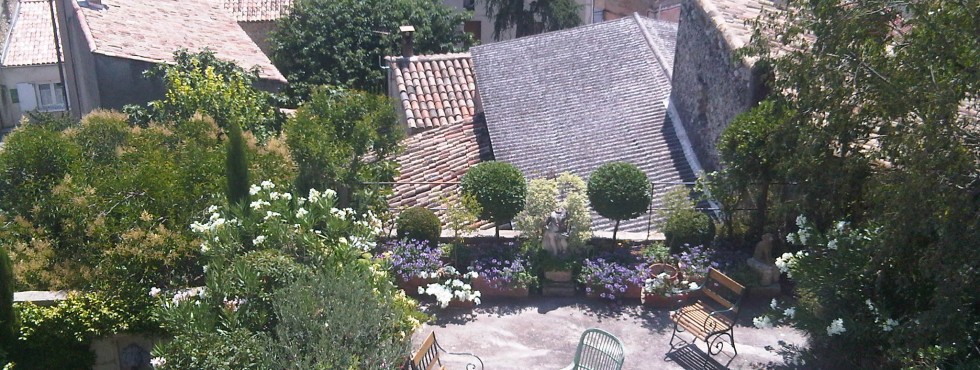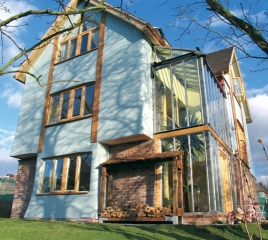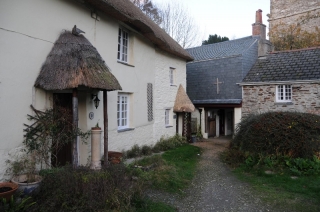What is this thing called ‘sustainability’?
What is this thing called ‘sustainability’?
Sustainability is a word that seems to have fallen out of fashion in 2012. Not surprising. It’s a word that has been applied liberally to various wondrous eco-projects that are now showing all the signs of being very unsustainable a few years into their lives.
In particular, this seems to be the case with buildings. The high tech heat control systems that were sold on the ticket of sustainability (but never worked), the prohibitively expensive solar panels that were necessary to get the renewable energy ticket (but never worked properly) and the shiny glass and steel structures that are now looking shabby and rusted.
So what is it that ensures real sustainability in a building?
We’ve had our own share of problems with technology and this, in part, prompts me to write this. The houses at The Wintles were at the ‘cutting edge’ of eco-tech in their day, and now that they’ve been lived in for several years we can begin to see that, in reality, once the houses are well insulated and free from draughts, the eco-gizmos haven’t really been of much benefit (despite their great expense).
However, the houses at The Wintles are showing all the signs of true sustainability. This is down to the simple fact that people enjoy living in them and are prepared to look after, not only their own houses, but the spaces around their homes. This is because the pattern of development at The Wintles is based on a proven model.
We can’t predict what marvellous new technology and materials will be available in the future, but we can look back and determine what has worked well for people in the past.
This research is an essential thing in beginning to create a new building or place that has some chance of being truly sustainable in the future.
Get this element of the design right, and everything else will follow. Get it wrong, and sooner or later, whatever you build will be rejected, defaced and eventually abandoned.
So where do we start?
Start as close as you can to where you want to build. Every place has its own micro climate and culture. These are the fundamental things that should influence the design of the place or building. So, it is important to study how successfully existing places have responded to this. Other factors will have an impact, like availability of materials or economic circumstances, but these are secondary to the fundamental.
This might sound like a daunting task, but it’s not.
Quite simply, if you want to build something that is sustainable; then look at what has proven sustainability close by. What place can show many generations of inhabitants? What places have been maintained well? Which places are the most expensive to live in per square foot because they’re the most desirable?
What places have been loved?
For example, in preparation for the design work on a site near Truro, UK, I came across this cluster of houses. Now, these are very high maintenance buildings. Neglect these for a few years and they will very quickly disappear. Once the thatch lets in the rain, the timbers will rot and the stone fabric of the building will be undermined.
However, they are still in good order and are highly desirable (in local estate agents’ terms) despite being damp, draughty, dark, and … high maintenance.
Why?
I believe it is because the ‘place’ is ‘just right’. Something about the position, the relationship and the arrangement of the houses works well for human beings. It is a place that people have loved living in for a very long time.
Some of this will be down to the way in which the houses make the most of the sun and shelter themselves from the cold which will be unique to this place, but other things are more generic.
The space between the buildings is small enough to be protective but not claustrophobic; which is ideal for the local climate and culture. The size, form and adaptability of the buildings works well and crucially, the residents have felt comfortable about looking after the shared space between the buildings.
These are the elements of real sustainability.

Our challenge is to understand these elements, ensure that the shape and form of the new place is just right and then (and only then) apply contemporary design to ensure that the new place is win, win. Highly desirable, without being damp, draughty and dark (or high maintenance).


